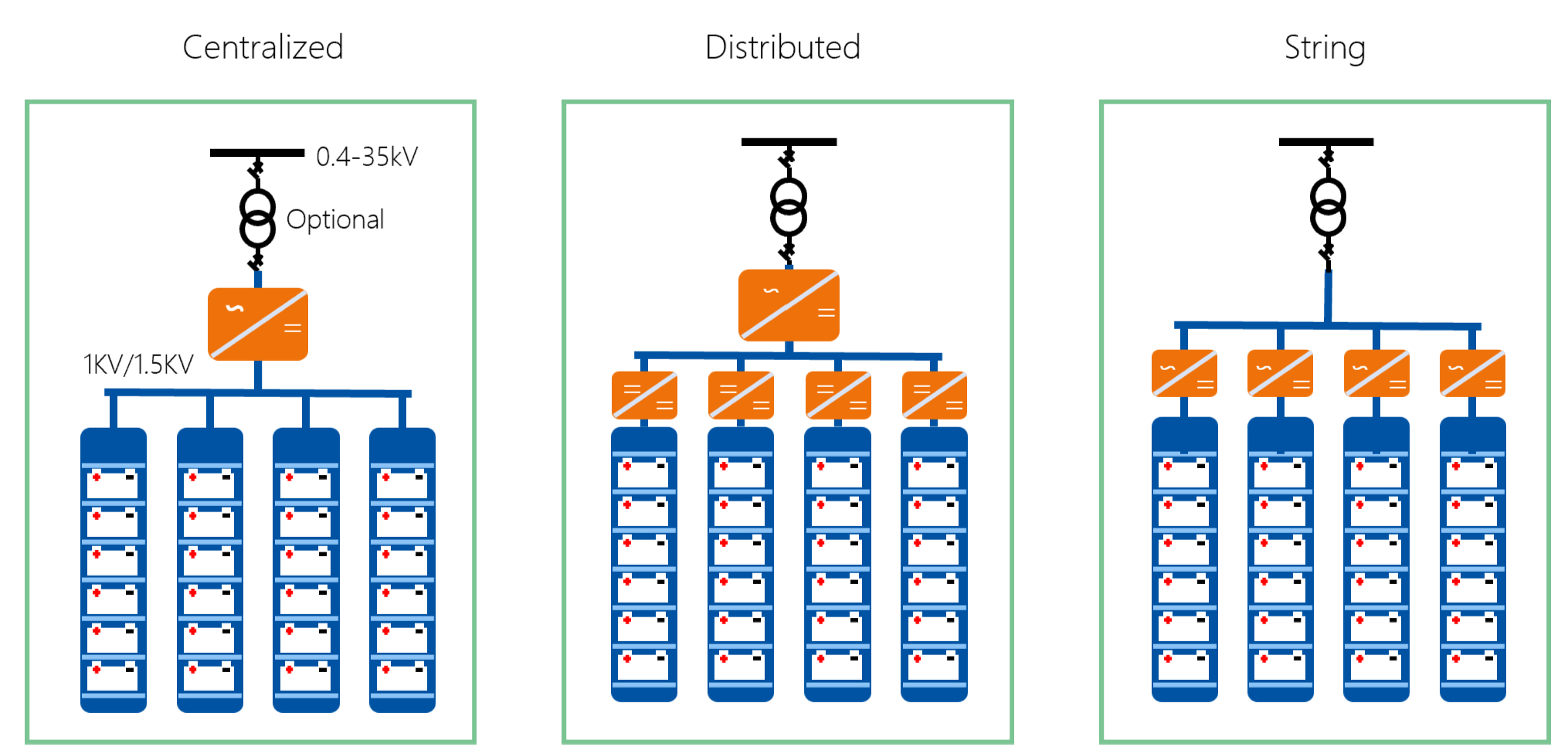In the dynamic landscape of energy storage systems (ESS), understanding the evolution of topologies is crucial for optimizing performance, cost-effectiveness, and reliability. Let’s delve into the historical development of three key ESS topologies: Centralized, Distributed, and String-Type configurations.

Table of Contents
1. Centralized Energy Storage Systems
Overview:
- Early Dominance: Centralized ESS, where multiple battery clusters connect in parallel to a high-power PCS, initially dominated the scene.
- Pros:
- Cost-Effective: Simple design and control.
- Scalability: Easy to expand.
- Cons:
- Battery Degradation: Uneven load distribution led to rapid battery capacity degradation.
- Economic Concerns: EPCs and project owners increasingly prioritize ROI, leading to reduced adoption.
2. Distributed Energy Storage Systems
Overview:
- Retrofitting Centralized Systems: To address battery degradation, existing projects retrofitted centralized systems by adding bidirectional DC/DC converters to each battery cluster.
- Advantages:
- Battery Health: Improved lifespan due to better load balancing.
- Safety Enhancements: Enhanced safety features.
- Compatibility: Integration with existing infrastructure.
- Challenges:
- Higher Costs: Additional components increased expenses.
- Complex Control: Managing multiple converters introduced complexity.
3. String-Type Battery Energy Storage Systems (BESS)
Overview:
- Current Popularity: String-type BESS configurations are gaining traction. Leading companies like Enjoypowers, Huawei, and SMA actively promote this approach.
- Advantages:
- High Efficiency: Minimizes losses during energy conversion.
- Battery-Friendly: Optimizes battery lifespan.
- Scalability: Easily expandable for future needs.
- Applications:
- Commercial Buildings: Powering lighting, HVAC, and critical loads.
- Data Centers: Supporting sensitive electronic equipment.
- Renewable Integration: Grid-tied solar and wind systems.
4. Conclusion
Choosing the right ESS topology depends on project-specific requirements. Consider load types, safety, scalability, and economic factors. Whether you’re retrofitting an existing system or designing a new one, understanding these approaches ensures efficient energy utilization.
Enjoypowers’ PCS modules are indeed well-suited for constructing a string topology. By connecting each battery cluster to a dedicated PCS unit and grid-connecting the AC outputs of multiple PCS units, you can achieve an efficient energy storage system. This configuration not only improves energy conversion efficiency but also optimizes battery lifespan.
In the commercial and industrial sectors, the string topology has become the mainstream choice, applicable to various scenarios, including commercial buildings, data centers, and renewable energy integration. Whether you’re upgrading an existing system or designing a new one, understanding these topology approaches ensures efficient energy utilization.
Related Reading
Designing High-Reliability, Low-Cost 500 kW/1000 kWh Energy Storage Systems
Enhancing Commercial Energy Storage Systems with Direct PCS-BMS Communication
Understanding Load Characteristics and Design Considerations for Commercial Energy Storage Systems
Hybrid ESS Energy Storage Systems: Unleashing Efficiency Through AC and DC Coupling
6 Essential Strategies for Choosing C&I BESS Energy Storage Battery Solutions
10 Essential Steps to Optimize Your C&I Energy Storage System ESS with the Right PCS
Decoding 3P3W vs. 3P4W for Commercial and Industrial Energy Storage PCS
